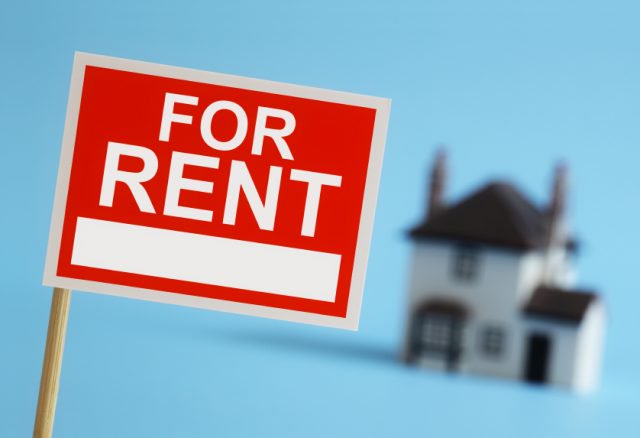The first “concrete evidence” of a buy-to-let slowdown have been revealed, as landlords are selling off their properties and paying down debt, new data shows.
The first evidence has emerged that buy-to-let landlords are increasingly selling their investment properties or paying down their mortgage debt, following a series of tax and legislation changes.
Figures from UK Finance show that growth in outstanding buy-to-let mortgages is failing to keep pace with new mortgages being granted, in a reversal of the broad relationship between the two over the past decade. This strongly suggests that some buy-to-let mortgages are being redeemed, as investors sell their rental properties.
The Director of Residential Research at property firm Savills, Lucian Cook, comments: “It’s the first concrete evidence that people are rationalising their portfolio or exiting the sector. It’s not an exodus or a mass offloading of buy-to-let stock, but it suggests the combined range of tax measures is causing some people to re-evaluate whether or not buy-to-let is for them.”
The difference between the two measures widened to a ten-year high in the 12 months to June 2017. Although 78,000 new buy-to-let mortgages were approved in this period, the overall number of mortgaged rental properties only grew by 28,000 – a net difference of 50,000 properties.
The figures exclude remortgaging and highlight the acceleration of a trend that began in the third quarter (Q3) of 2016.
Stephen Johnson, the Managing Director of Commercial Lending at Shawbrook Bank, believes that the data supports anecdotal evidence that landlords’ sentiment has “slightly soured”.
“People are deleveraging and selling down parts of their portfolios in anticipation of tax rises and rising costs,” he adds.
Heavily leveraged buy-to-let landlords have been under pressure since the beginning of a gradual withdrawal of higher rate tax relief on finance costs, which began in April this year. By 2020, the relief will be cut altogether.
Buy-to-let lending rules have also been tightened, with a stress test introduced at the start of the year and new criteria for portfolio landlords from September 2017.
The combined effect of these changes has been to curb buy-to-let demand in parts of the country where rental yields are lower. In these areas, it is now much harder for mortgaged landlords to cover their costs and make a profit.
A recent survey by Totally Money found that the highest yielding postcodes in the UK are in Liverpool, Plymouth, Cleveland, Preston, Dudley and Nottingham. By contrast, no postcodes in London or the Home Counties made it into the top 25.

First “Concrete Evidence” of a Buy-to-Let Slowdown Revealed
This trend is likely to accelerate if the Bank of England (BoE) pushes through further interest rate rises, which would increase costs for mortgaged borrowers. In new forecasts, Savills predicts a 27% decline in the number of mortgaged buy-to-let transactions over the next five years.
Cook explains: “When you get that combination of interest rate rises and the loss of tax relief, you’re much more likely to see it hit home.”
Stamp Duty costs have also been pushed up for buy-to-let landlords, following last year’s introduction of the 3% surcharge for additional homes.
However, property industry experts claim that the reduction in tax relief is the bigger blow for most landlords. While higher Stamp Duty rates may prevent new investors from entering the market, it will not influence those already in it.
Johnson says that the UK Finance data has been foreshadowed in recent surveys of landlords, when asked how they would react to more challenging conditions.
“The typical response is: ‘We’re looking to raise rents.’ That’s not always in your gift. But responses saying we’re looking to pay down debt and sell off parts of our portfolio were almost as commonplace as looking at the rent,” he explains.
The figures also ignore the impact of cash buyers, who may remain active in the buy-to-let sector. While the withdrawal of tax relief on finance costs will not have affected them, they would still have to absorb the additional Stamp Duty costs.
Receipts from the surcharge have continued to rise since its introduction in April 2016. It raised £1.7 billion in 2016-17, according to HM Revenue & Customs (HMRC) estimates, and more than £1 billion in the six months to September 2017.
Landlords with relatively small mortgages are more likely to stay in the market, experts believe, since their repayments will be more affordable, even under higher interest rates and stressed scenarios.
Research by academics at the London School of Economics, published in December last year, found that the main source of purchasing finance for landlords were personal savings (used by 41% of investors), buy-to-let mortgages (36%) and inherited funds (17%). Half of buy-to-let landlords surveyed said that they paid £5,000 or less in mortgage interest per year.
However, there are alternative explanations for the widening gap between new buy-to-let mortgages and the change in the total stock of rental properties. One is that lenders may be selling their buy-to-let loan books to other companies not accounted for in the UK Finance data. Another is that a wave of individuals has moved their properties portfolios into a limited company structure.
Nevertheless, the scale and consistency of the disparity, which has now been widening over three consecutive quarters, suggests a broader trend is underway, Cook claims.
The latest UK Finance figures also show that the number of mortgages in arrears of 2.5% or more of the outstanding balance dropped again in Q3 this year, but cases of possession edged upwards from a historically low level.
At 88,300, the number of loans in arrears was 2% lower than in Q2 (90,400) and at its lowest level since these figures were first collected in 1994.
The number of properties taken into possession in Q3 nudged upwards, however, to 1,900 – the same total as in Q1 this year. The Q2 total of 1,800 had been the lowest since quarterly data began in 2008, and the proportion of properties taken into possession (at 0.02%) has remained unchanged in each period since Q2 2015.
Within the total, the amount of owner-occupied properties taken into possession rose from 1,100 to 1,300 on a quarterly basis, while buy-to-let repossessions dropped from 700 to 600. The last time the number of owner-occupied possessions grew was in Q1 2014, when the total increased from 4,900 to 5,000.
The amount of mortgages in arrears fell across all bands, the latest data shows, apart from those owing 10% or more of the outstanding balance. The number of mortgages in this category edged up by 0.4%, from 25,500 to 25,600, partially reversing a 4% decline in the amount of loans in this category in Q2 2017.
A total of 83,300 owner-occupiers were in arrears of 2.5% or more of the balance – down 2% from 85,300 in the previous quarter. Reflecting the pattern across the wider market, owner-occupier arrears dropped in all bands, except those owing 10% or more of the balance, with the total in this category rising from 24,400 to 24,500.
Buy-to-let arrears were flat, apart from a slight increase in those with higher levels of debt. Overall, the number of buy-to-let mortgages in arrears rose by 2% to 5,100 (from 5,000 in Q2).
June Deasy, the Head of Mortgages Policy at UK Finance, comments: “Even a small rise in mortgage possessions is disappointing, but, after a long period of declining numbers, it was inevitable that they would rise again at some stage. Both arrears and possessions remain low by historical standards, and look set to be lower for the year than we predicted at the start of 2017.
“We expect the vast majority of mortgage borrowers to continue to manage their finances successfully, but they should continue to keep their plans under review. Any customer who thinks they may experience payment difficulty should always speak to their lender at the earliest opportunity. Lenders remain committed to working with borrowers to keep them in their home wherever possible, and possession continues to be the last resort.”
SaveSave
SaveSave







